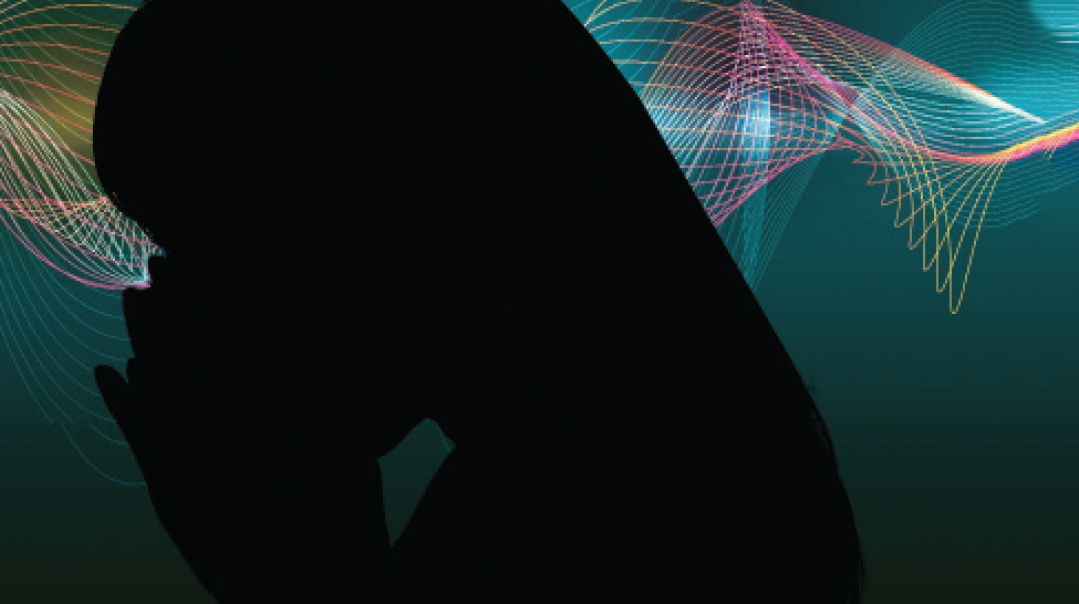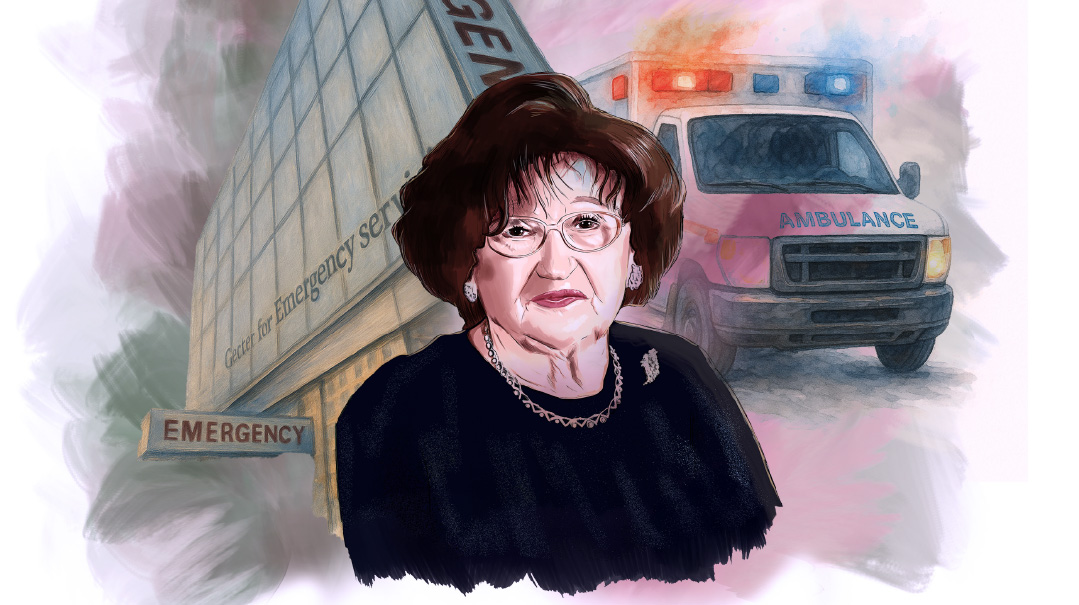Shocked Out of Depression

Once viewed as a terrible procedure forced on the mentally ill, electroconvulsive therapy (ECT) is becoming more popular as it helps deeply depressed people emerge from a pit of despair. But the suspicion lingers. Is shock therapy the bedeviled curse some people claim, or the miracle cure proclaimed by many others?

A
man is led into a room and instructed to lie down on a narrow hospital bed. He stares up at the silent, expressionless faces above him, seven men and women clad in white. They are there, he knows, to hold him down. His meek attempts at humor are ignored.
His eyes dart around in terror as he watches the proceedings: bite guard shoved into his mouth, gel applied to his forehead, the dial on an electric shock machine being turned. For the next agonizing 30 seconds, the man is held down on all sides, his face crimson, eyes squeezed shut, limbs flailing as his body convulses on the table. Guttural moans emit from his throat, his face the picture of torment.
This famous scene depicting electroconvulsive therapy (ECT) is from a 1975 film and is a striking portrayal of how mass media can affect the attitudes of an entire nation. Indeed, despite advances in technique, and research demonstrating its efficacy in treating serious depression and other psychiatric disorders, it is questionable whether ECT will ever fully rise above its tarnished reputation, begotten in large part by this single movie scene (and the novel it is based on).
The shadow cast over ECT by the long arm of pop culture lingers until today: Despite its success rate, it still has a controversial public image and is considered a last-resort treatment option. Speak to patients who have received ECT and you’ll hear two dramatically different reactions. The same treatment elicits this: “Biggest blessing ever and the only reason I’m alive,” “Finally — something that worked,” “The best thing I ever did,” and also this: “It was a nightmare,” “Horrible,” “Worst experience of my life.”
So what’s the truth about shock therapy? Is it terrible or life saving? The conundrum is answered in a single word: memory. But first, a brief history.
ECT — Then and Now
The knowledge that convulsions can have a positive effect on mental state goes back many centuries. Hippocrates noted that mentally ill patients who contracted malaria and had seizures as a result seemed cured of their “insanity.” In the Middle Ages, cholera epidemics that spread through insane asylums seemed to cure patients. As early as 1785, the London Medical Journal documented the practice of inducing seizures to treat psychiatric conditions. By the early 1900s, physicians were experimenting with inducing seizures using drugs (such as Metrazol) and by overdosing patients with insulin. While these methods produced remarkable initial results, before long they fell out of favor. Insulin-induced seizures mostly had a temporary effect, and drug-induced seizures were hard to control, often resulting in broken bones.
In 1937, while watching pigs being anesthetized with electricity before slaughter, Italian neurologist Ugo Cerletti had a eureka moment: Why not use electricity to induce seizures in mentally ill people? The improvement he saw in patients was startling, and a new treatment, electroconvulsive therapy (ECT), was born.
Early ECT sessions were frightening affairs, perhaps similar to the scene described above. Fully conscious patients would experience full-blown seizures, sometimes strong enough to cause broken bones. Over time, improvements were made: muscle relaxants were introduced to tone down the convulsions, briefer pulses of electricity were administered, and general anesthesia became standard.
Growth of the psychiatric drug industry and the public’s negative perception of ECT led to a decline in its use from the 1950s to 1970s, but it has since rebounded, perhaps in part because of the gentler treatment offered today.
“At first, I was terrified to do shock therapy,” confesses Avigail, who has bipolar and used ECT twice to control manic episodes. “But it was like any basic surgery. I was wheeled into a hospital room with a doctor and several nurses, then given general anesthesia and relaxants.”
From there, electrodes were placed on Avigail’s head and her brain was zapped with a brief pulse of electricity, enough to cause a controlled seizure. “After I woke up, I asked a nurse if my body had convulsed a lot. She said that I hardly reacted — just one little toe moved a bit.”
Today, ECT is considered the most effective, fastest-acting treatment for those with severe depression. It’s generally used when medications have failed, or when a patient is so severely depressed or suicidal that immediate relief is crucial. It is also effective for bipolar disorder (both depressive and manic states), catatonia (a disorder characterized by stupor — unresponsiveness to stimuli, with an inability to move or speak), severe schizophrenia, and even Parkinson’s disease. An estimated 100,000 people a year receive ECT in the United States.
“Not every depression is the same,” says Dr. Michael Dulchin, associate professor of psychiatry at NYU in New York City. “When someone’s experiencing a reactive depression to a situation in life — feeling sad but an outside observer may not necessarily notice, there may be less of a response to ECT. So, too, for those with chronic, unremitting depression. However, when someone cycles from being well into a clearly depressive episode — where they’re different in every way than they usually are and it’s clearly noticeable — ECT will likely have a very robust response.”
What makes ECT so effective? The electricity-induced convulsion, which usually lasts less than one minute, seems to have a “rebooting” effect on the brain. Exactly how this works remains unclear. One theory suggests that the seizure affects the release of neurotransmitters, chemical messengers in the brain that affect mood. Another theory posits that the seizure adjusts the brain’s regulation of stress hormones, which also affect mood. Whatever the mechanism, that it has a powerful effect is incontestable: Its success rate with treating severe depression is about 80 percent, higher than that of antidepressants. However, without maintenance treatment — with either drugs, ECT, or both — many patients relapse. A typical course of ECT is two to three sessions per week for three to four weeks, for a total of six to twelve sessions. Maintenance ECT is often tapered to once a month, for a number of months or longer.
From Crisis to Cure
“When I came home from seminary and started college, I started exhibiting symptoms of bipolar disorder,” says Batya Feiner, a young mother and dietician. “I was misdiagnosed as having depression, and the antidepressants I was put on pushed me into a manic state that lasted a few years. Even once I was properly diagnosed, medications only had a limited effect. For eight long years, I never felt like myself.
“After I had my son, I experienced the most horrible postpartum depression,” Batya shares. “Suicidal, wanting to die, I admitted myself to the psych ward. I was pumping milk in the hospital, and the staff was so concerned about my mental state that they insisted on watching me, to make sure I wouldn’t strangle myself with the pump’s cord.
“A new medication took the edge off for a while, but soon enough I hit rock bottom again. For a few horrific months, every day was a struggle; I just wanted to die. When my psychiatrist suggested ECT, I realized it was my last chance to be helped. It was this — or I don’t know what. So I jumped at the chance.
“I went through a three-month course of ECT, followed by a maintenance session once a month for the past two years. For the first time in almost a decade, I feel totally normal. I’m symptom-free; I never got even close to this with medications. I am so thankful that this option exists. I made a seudas hodaah on the anniversary of my starting ECT.”
Doctors have also seen dramatic responses. “I once had a patient who was so intensely depressed and anxious that all he could do was pace back and forth in agitation, inconsolable,” Dr. Dulchin relates. “He received a course of ECT as an inpatient, and seemed to respond well. Two months later, one of the nurses bumped into him at the airport. He looked normal, even jovial. He was wearing a T-shirt that said, ‘Be Happy.’ There was clearly an enormous change in him.”
The long-term healing potential of ECT is something that Dr. Barry Kramer has witnessed at Olympia Medical Center in Los Angeles, where he is the medical director of ECT. “I was once consulted about a severely schizophrenic woman who was hospitalized for five years, and nothing had helped her. We tried ECT. After 22 treatments, she was so much better that she was able to go home. This was in the 1980s, and although she’s had sporadic brief relapses, overall she’s been doing well on maintenance ever since.”
So… miracle cure?
Not so fast.
The Catch
Do you remember the word I mentioned earlier and hinted that we’d get back to? If you’re currently undergoing ECT, chances are you don’t. Because virtually no one is spared memory loss — and no one can predict how mild or severe it will be.
Consider this quote from a famously gifted, infamously unstable man in 1961 who received ECT treatments: “Well, what is the sense of ruining my head and erasing my memory, which is my capital, and putting me out of business? It was a brilliant cure, but we lost the patient.” Two days later, Ernest Hemingway put a gun in his mouth and pulled the trigger.
Fine-tuning of the treatment since those early days, with briefer pulses of electricity and improved positioning of the electrodes on the head, has minimized memory loss somewhat. The most commonly reported memory loss involves losing memories from a few months before ECT starts (retrograde amnesia), throughout the period of ECT treatment, and for a short period afterward (anterograde amnesia).
“There are different components of memory — such as verbal, visual-spatial, and written memory — and each person is affected in a different way,” explains Dr. Kramer. “Memory loss generally gets worse with more treatments, and then improves when treatment stops. Many patients experience difficulty with word retrieval and remembering numbers. A few months after treatment, residual memory loss is variable and usually autobiographical — they won’t remember events that occurred and people they’ve met around the time of their ECT. These were never stored in their memory.”
Batya noticed memory difficulties right away. “During the acute phase of ECT, I’d meet someone at shul and say, ‘Nice to meet you.’ My husband would later tell me that I already met them the week before. Now that I’m on maintenance, my memory has improved, but I have almost no recollection of events from that time period. And I still struggle a lot with remembering the names of people I’ve met since starting ECT. In my work as a dietician, it takes me months to remember a new patient’s name. Interestingly, I’ve always been musically inclined, and although I have a hard time with word retrieval, I have no problem remembering any words that are put to music.”
Sometimes, memory loss from such a bleak time can be a blessing. Rebecca Greenwald, a 69-year-old school nurse who underwent ECT for depression, relates, “True, I don’t remember the caring efforts of my friends and family to lift me out of my depression — the long drives, the visits, or anything else. But I am so very grateful that I also don’t remember being hauled by ambulance into the psych ward after losing total control of my behavior.”
Rebecca had a total of seven treatments, and other than forgetting the time period around her ECT, her memory is normal. Batya, whose ECT course was longer and who remains on maintenance, has some minor memory difficulties, but functions well.
Yet not everyone is so lucky. The Internet is teeming with comments from disillusioned, angry patients, many saying they weren’t adequately warned about the memory loss. Quotes such as, “I have no recollection of my 20 years in the Marine Corps,” and “It wiped out most of my long- and short-term memory,” are jarring to read.
Studies on permanent memory loss from ECT are conflicting, with some indicating that long-term memory almost always returns, yet others showing that large numbers of patients report permanent memory loss. How do psychiatrists respond to these grievances?
“I believe that 99 percent of patients view ECT positively, feeling like it’s given them their lives back,” says Dr. Kramer. “I see it in my own practice, where patients return down the road if their depression comes back, and they also refer family and friends. I get calls such as, ‘You saved my life 25 years ago. Can you help my daughter?’
“Like with any other treatment in the world, a small number of people have had bad experiences, and those people want the world to know. The awful stories you read online represent a tiny minority of ECT patients.”
Dr. Dulchin adds, “Often, people forget how lousy they felt at their lowest point. After treatment, when they’re feeling so much better but are left with some memory lapses, they might say it wasn’t worth it. Also, making an accurate psychiatric diagnosis can be tricky. If someone is treated with ECT for a misdiagnosis of depression when they really have a personality disorder, the ECT won’t make them feel better, and they’ll have gained memory problems.” Who wouldn’t be disgruntled?
To further complicate things, both depression and antidepressants can also cause memory problems. Often, those with depression stay on their antidepressants while undergoing ECT. It’s easy to cast all the blame on ECT, yet no one can honestly calculate the influence of each factor.
Kitty Dukakis, wife of presidential candidate Michael Dukakis and former First Lady of Massachusetts, sums up her view in her book Shock: The Healing Power of Electroconvulsive Therapy: “The control ECT gives me over my disabling depression is worth this relatively minor cost. It just is.”
There is one way to affect the severity of memory loss. Electrodes can be placed either bilaterally (on both sides of the head) or unilaterally (only on the right side). Bilateral placement results in a quicker, more vigorous response, but is associated with more memory problems. Unilateral placement may take longer to work and be less effective, but memory problems may be more limited, because the left side of the brain, which controls memory in most people, isn’t directly zapped. There’s no right answer, and while ECT specialists tend to have a preference for one method over the other, it’s often decided on a case-by-case basis. For example, a psychiatrist treating an attorney, for whom remembering details is very important, may choose unilateral.
Eleventh-Hour treatment
While it may not be the perfect cure, should ECT’s rightful place be that of a last-resort treatment? “If I had severe depression, I’d go for ECT immediately — it’s safer, faster, and more effective than drugs,” says Dr. Kramer. “But the treatment is still stigmatized. People conjure up frightening images at the thought of passing electricity through the head. They may mistakenly associate it with the lobotomies done in the 1940s and 1950s, where neurons were grossly knocked out, with horrific results. They may have read about the way ECT was overused — by contemporary standards — in the early years. If we could overcome the stigma, I believe that in many cases, ECT should be a front-line treatment.”
Rebecca’s initial resistance exemplifies that mindset: “In nursing school, I had to witness ECT as part of my psychiatric rotation. This was back in the 60s, and the images in my head were of people jolting violently on the table. These memories made me very fearful, but I was in such a dark hole, convinced I was going to die, and I knew it was the only thing that could help me, so I accepted it. Thank G-d I did.”
Because of the fear factor, both Batya and Rebecca feel that trusting one’s doctor is crucial before committing to ECT. After all, one is literally putting his or her brain in the doctor’s hands.
There are practical reasons, as well, for why ECT may not be chosen at first. “It’s a huge commitment of time,” explains Batya. “For the three months I was treated three times a week, I took a leave of absence from work. I couldn’t remember basic information, making it impossible for me to fulfill my job responsibilities. I also wasn’t allowed to drive for 24 hours after each ECT session. You can’t lead a normal life during this time. And this cannot be done alone; the extensive support of my husband and parents, both physically and emotionally, was what made it possible.”
Despite the drawbacks, Batya has no regrets. “I got used to my memory challenges, and for me, it is totally worth it.” She adds, “People need to know that there are very good therapies out there. ECT is not torturous, and not as scary as people think. So much good can come from it.”
For Avigail, ECT was far more effective than the sedation drugs she initially used to treat her mania. “The ECT recovery was much faster. I was able to regain stability quicker and function normally again, and the memory loss was minimal,” she says. Still, she felt embarrassed afterward that she was in such a bad state that seizure-inducing shock therapy was the only solution. “My therapist helped me look at the treatment differently,” remembers Avigail. “She called it a gift from Hashem.”
Into the Future
As the world of psychiatry continues to evolve, how will the role of ECT evolve with it?
The thought of performing ECT on a child or adolescent might elicit a knee-jerk negative reaction: Is it ethical to allow parents to make such a decision for a child? Is the child himself even capable of making such a decision, if given the opportunity? How would the treatment affect his still-developing brain?
Yet there are adolescents out there who are deeply dysfunctional, delusional, dangerous to themselves and others. They have not responded to drug therapy, and need help fast. “There’s a growing body of literature showing that ECT can be lifesaving for adolescents with severe mental illness,” says Dr. Kramer. “But there is very limited availability; many states don’t allow it. I know of a catatonic child in California who had to fly out of state every week or two until he turned 18, or he would’ve ended up in the ICU. I believe that with time, ECT will play an expanded role in the treatment of these minors.”
There are other, newer therapies that are gaining traction, such as TMS (transcranial magnetic stimulation), which relieves severe depression by using magnetic fields to generate an electric current in the brain. “These methods are safe, with minimal side effects, and don’t affect memory,” says Dr. Dulchin. “I think this is the direction of the future.”
The memory loss inherent in ECT therapy may soon bang neuroscience up against ethics in ways that are intriguing to scientists who like to push the ethical envelope. In a recent study published in the journal Nature Neuroscience, it was shown that human memories can be manipulated with electricity shortly after they’re recalled.
Can and should traumatic memories be erased? Would a parent have the right to erase memories of traumatic events from their children’s minds? Can spies and soldiers be trained to commit atrocities without regret, the burden of memory removed? And without memories, how much of a person himself is erased? While these questions may sound far-out to the layperson, those on the frontier of science understand that today’s fact was yesterday’s fantasy, and the future may hold amazing — and frightening — possibilities.
(Originally featured in Family First, Issue 445)
Oops! We could not locate your form.












